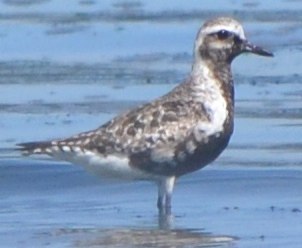Located in Central Saanich, just off the Pat Bay Highway by Michell's Market, this farming region is a great place for birdwatching. Earlier this year, Tundra and Trumpeter Swans were regularly seen in the fields along Island View Road. I've photographed birds of prey there: an immature Bald Eagle and a Cooper's Hawk. I've seen Mourning Doves and Belted Kingfisher on Dooley Road and singing Meadowlark on Lochside Drive. It is almost always mentioned in the weekly Rare Bird Alert Transcript. In fact, I'm hoping the rain holds off this weekend as some good birds have been reported in the area recently.
 |
| Belted Kingfisher |
 |
| Cooper's Hawk |
Immature Bald Eagle in flight |















































